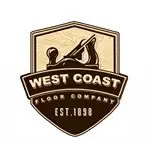The Ins and Outs of Hardwood Flooring
If you are starting the process of looking for new wood flooring you may have some questions about what elements of variables, such as does hardwood board length really matter? In reality, there are a lot of different elements to take into consideration and many of them are really important to ensure you will love your need wood floor.
Some of the elements you are selecting when getting a new hardwood floor will affect how your family enjoys and uses your floor. Species and finish will affect how the floor wears and withstands damage over time. These elements are generally the first to consider and some of the most important elements. Next, you will have to decide on plank width, plank length, and stain options. These elements are still important but are about cosmetic advantages rather than functionality.
You may be wondering how the plank length can really matter, especially after installation. Just like with a tile floor, each time there is grout your line of sight is interrupted. The fewer joints you see the more open and airy the room will feel because your eyes will be drawn along the boards. The bevel on a prefinished or engineered floor works a lot like the grout of a tile when it comes to visual representation.
What’s the average length of hardwood flooring?
 That is a pretty common question consumers ask when purchasing hardwood flooring for their homes and businesses. Manufacturers generally do not package boxes with boards of all the same size, nor do they specify how many boards are of a particular size. Instead, when you buy and receive a box of wood, what you’ll find are boards in a range of sizes. There’s no set length; it’s all random.
That is a pretty common question consumers ask when purchasing hardwood flooring for their homes and businesses. Manufacturers generally do not package boxes with boards of all the same size, nor do they specify how many boards are of a particular size. Instead, when you buy and receive a box of wood, what you’ll find are boards in a range of sizes. There’s no set length; it’s all random.
Typically, you will find boards no longer than 7 feet, and no shorter than 1 foot. The average length is between 3 and 3.5 feet.
Extra Long length boards are more natural-looking than shorter boards. A small room can really benefit from the longer length boards because it makes the room feel larger. Larger spaces still benefit from the long planks by making them feel open and spacious.
While long length planks are the main focus, varied lengths are still very important. Hardwood looks best with a variety of board lengths to give it some visual interest. It also looks most natural when the boards are not uniform length. Wood is a natural substance so when there is a variety in the length it has the most cohesive look. When you have consistent length boards the floor will begin to look choppy or patterned.
Finally, when working with wider widths you will need to pay even more attention to board lengths. The boards need to be longer when the planks are wider to ensure they don’t look stumpy. The width of the plank can cause even a normal length board to look short. When you are installing a new floor the distributor and mill are a great resource for making sure you get all the elements you are looking for. Ask if they can show you some board samples to ensure you are getting the width you are looking for.
In Conclusion:
If you are thinking about upgrading the flooring in your home or business you may wish to consider using long length boards to replace your existing floors. The length of the floorboards you select will have a huge impact on the overall appearance of the room. Longboards are designed to create a much cleaner line than traditional hardwood flooring by eliminating the need for as many butt seams and joints. In fact, depending on the dimensions of the room, we may be able to eliminate butt seams completely by using long boards rather than a more standard size flooring. Longer boards are a great way to add yet another beautiful element to your new wood floors. If we can help you with a design consultation please contact us.
